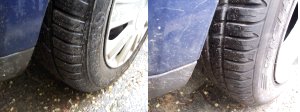A new law in Germany has tightened the rules on the types of tyres that you can use in winter.
Until now, the law only said that you had to have “suitable” tyres for the road conditions, but did not actually specify that you had to have winter tyres on in winter. Indeed, many people with good tread on their summer tyres continued to use them throughout the winter, and would probably argue that they were suitable as long as the main roads were clear.
The trouble was, that unless they caused an accident, the police were as good as powerless to argue against them, so the politicians were under pressure to amend the law to get things clarified.
Unfortunately, they made quite a mess of it. [Read more…]



